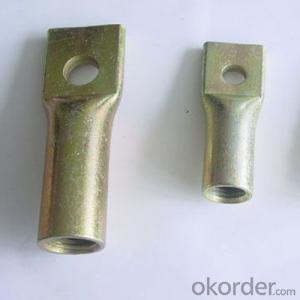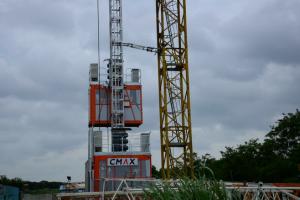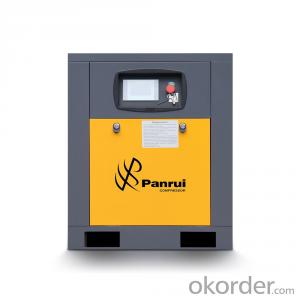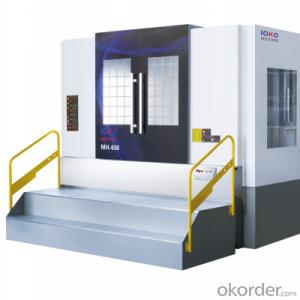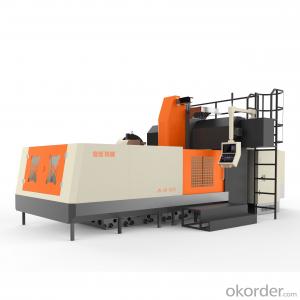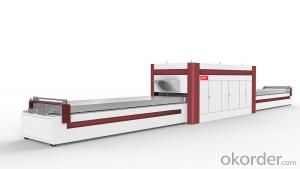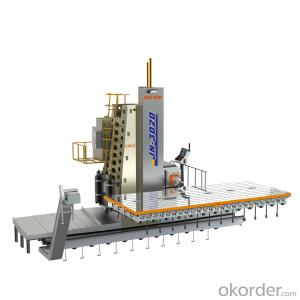Precast Concrete Transport Socket with CE and ISO 9001 Certificates
- Loading Port:
- Tianjin
- Payment Terms:
- TT OR LC
- Min Order Qty:
- 100 pc
- Supply Capability:
- 10000 pc/month
OKorder Service Pledge
OKorder Financial Service
You Might Also Like
1. Specifications:
Thread M/RD 12-52 transport socket
3-4 times lifting capacity
Testing before shipment
Provide test certificate
M/RD 12-36
2. Features:
1) Product: lifting socket, lifting insert, bend and waved socket, transport socket, flat socket, socket with bar and more
2) Diameter: M/RD 12-36mm
3) Length: 40-200mm
4) Capacity: 0.5-12.5MT
5) Material: stainless 304/316, ST52.3
6) Surface: plain, galvanized
3. Packing and delivery
Packaging details: tranport socket be packed in cartons, then put on steel plates
Delivery lead time: within 25 days after confirming the order
4. Primary competitive advantages:
1) More than 10 years focus on building material manufacturing
2) Prompt delivery time within 25 days after confirming order
3) Eathu's products are enhanced by the QA and quality control checks during the production; if necessary each order can be send out with a certificate referring back to test
4) Precast concrete elements may be lifted several times after casting and during storage and erection-by using this system, the designer and the worker manager ensure that each lift is carried out safely and quickly
· Experienced Staff
· Form A
· Guarantee/Warranty
· Packaging
· Price
· Product Features
· Product Performance
· Prompt Delivery
· Quality Approvals
· Reputation
· Service
· Small Orders Accepted
· More than 10 Years Experience
· Testing before shipping
Market:
Asia
Australasia
Central/South America
Mid East/Africa
North America
Western Europe
FAQ:
Q1: How long about delivery time Concrete transport socket ?
A1: The delivery time will be very short, normally we keep the raw materials for old customers and sometime we also keep stock products to
make sure delivery time in any emergency cases.
Q2: How do we guarantee the quality of our Concrete transport socket ?
A2: We have established an advanced quality management system which conducts strict quality tests at every step, from raw materials to the final product. At the same time, we provide extensive follow-up service assurances as required.
Q3: How soon can we receive the product after purchase?
A3: Within three days of placing an order, we will book the vessel for goods. The specific shipping date is dependent upon international and government factors, but is typically 7 to 30 workdays.
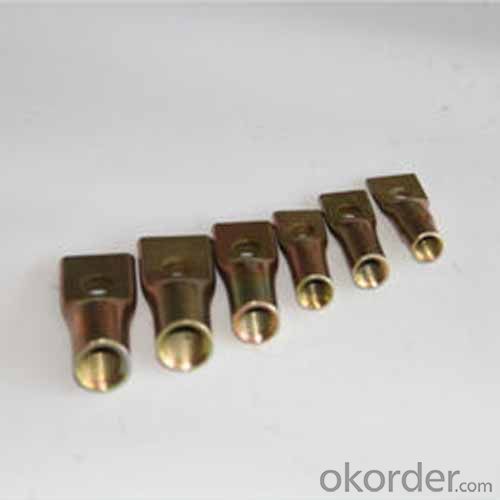

- Q:Can concrete pump spare parts be ordered in bulk quantities for future use?
- Certainly, one can place bulk orders for concrete pump spare parts to meet future requirements. Numerous suppliers and manufacturers provide the option of bulk ordering to cater to contractors and construction companies' needs. Opting for bulk orders offers various benefits, including cost savings, convenience, and a reliable supply of spare parts for maintenance and repairs. It is advisable to have readily available spare parts to minimize downtime and enhance the efficiency and performance of concrete pumps.
- Q:What is the function of a concrete pump water pump?
- The function of a concrete pump water pump is to supply water to the concrete pump system for various purposes. It is responsible for providing a continuous flow of water to the concrete pump, which helps in the mixing and pumping of concrete efficiently. The water pump ensures that the concrete mix remains at the desired consistency by adding water as needed during the pumping process. It helps to control the hydration process of the cement, preventing it from drying out and becoming unworkable. Additionally, the water pump also serves to clean the concrete pump system after use. It flushes out any excess concrete residue or debris that may have accumulated inside the pump, ensuring that it remains in good working condition. In summary, the function of a concrete pump water pump is to supply water for the mixing of concrete, maintain the desired consistency, and clean the concrete pump system.
- Q:How does a hopper vibrator prevent concrete blockages?
- A hopper vibrator serves as a mechanical solution to avoid concrete blockages in construction equipment like concrete pumps and mixers. Its purpose is to apply vibrations to the hopper, which is the large container where the concrete is stored prior to pouring or transferring. Concrete blockages commonly occur due to the tendency of the material to settle and compact, particularly during prolonged storage or transportation. This can result in the clogging and obstruction of concrete flow, thereby impeding the construction process and potentially causing equipment damage. Through the utilization of a hopper vibrator, the vibrations are transmitted to the concrete within the hopper, effectively preventing settling and compaction. The vibrations loosen the concrete particles, ensuring they remain in a more fluid state. This facilitates a continuous and smooth flow of concrete, preventing any blockages or obstructions from arising. Furthermore, the vibrations from the hopper vibrator also aid in dislodging any existing blockages. The shaking motion can break apart concrete clumps or other debris obstructing the flow, enabling uninterrupted material movement. Overall, a hopper vibrator is an indispensable tool in construction equipment as it helps maintain a consistent concrete flow, thereby preventing blockages and ensuring the smooth and efficient operation of the construction process.
- Q:Can concrete pump spare parts be tested for performance and quality before installation?
- Yes, concrete pump spare parts can be tested for performance and quality before installation. This is typically done to ensure that the parts meet the required specifications and standards, reducing the risk of any potential issues or failures during operation. Testing can involve various methods such as performance testing, stress testing, durability testing, and quality control checks to ensure optimal performance and reliability of the spare parts.
- Q:Can concrete pump spare parts be resold or traded in for new parts?
- Yes, concrete pump spare parts can be resold or traded in for new parts. Many suppliers and manufacturers offer buyback or exchange programs where customers can return their used parts and receive credit towards purchasing new ones. Reselling used parts is also common in the construction industry, as there is a demand for affordable alternatives to new parts. However, the resale value may vary depending on the condition and market demand for specific spare parts.
- Q:What are the signs of a damaged concrete pump S valve?
- There are several signs that indicate a damaged concrete pump S valve. 1. Leakage: One of the most common signs of a damaged S valve is leakage. If you notice any fluid or concrete leaking from the S valve, it could be an indication of a damaged or worn-out seal or gasket. 2. Reduced pumping efficiency: A damaged S valve can lead to reduced pumping efficiency. You may notice that the concrete flow is not as smooth or continuous as before, and it may take longer to pump the same amount of concrete. 3. Increased pressure: When the S valve is damaged, it can result in increased pressure within the pump system. This can cause strain on other components of the pump and lead to further damage or malfunction. 4. Unusual noises: Another sign of a damaged S valve is the presence of unusual noises during pumping operations. You may hear grinding, squeaking, or other abnormal sounds that indicate a problem with the S valve mechanism. 5. Difficulty in switching directions: The S valve is responsible for controlling the flow direction of the concrete. If you experience difficulty or resistance when switching the direction of the concrete flow, it could be a sign of a damaged S valve. 6. Inconsistent concrete flow: A damaged S valve can cause inconsistent concrete flow, resulting in uneven distribution or blockages in the delivery line. This can lead to delays and inefficiencies in the construction process. It is important to address any signs of a damaged S valve promptly to prevent further damage and ensure the safe and efficient operation of the concrete pump. Consulting a professional or the manufacturer's guidelines is recommended for proper diagnosis and repair of the S valve.
- Q:How does a hopper agitator motor ensure consistent concrete mixing?
- A hopper agitator motor ensures consistent concrete mixing by providing the necessary agitation and movement within the hopper. The motor is designed to rotate and move the agitator blades, which helps in effectively mixing the concrete ingredients. The primary function of the hopper agitator motor is to prevent the concrete from settling or segregating during the mixing process. As the motor rotates, it creates a swirling motion inside the hopper, ensuring that all the ingredients are evenly distributed and thoroughly mixed. This prevents any clumps or inconsistencies in the final concrete mixture. Additionally, the motor also helps in breaking up any lumps or clusters that may have formed within the hopper. This action further enhances the uniformity of the mixture and ensures that all the components, such as cement, aggregates, water, and additives, are properly blended together. Furthermore, the continuous movement of the agitator blades also helps in maintaining the desired consistency and homogeneity of the concrete mix. It prevents the heavier particles from settling at the bottom of the hopper, ensuring that the mixture remains consistent throughout the entire mixing process. Overall, the hopper agitator motor plays a crucial role in ensuring consistent concrete mixing by providing the necessary agitation, preventing segregation, breaking up lumps, and maintaining uniformity. Its rotational motion and strategically designed agitator blades help in achieving a well-mixed and homogeneous concrete mixture, which is essential for producing high-quality and durable concrete structures.
- Q:What are the key considerations when purchasing spare parts for a concrete pump?
- When purchasing spare parts for a concrete pump, the key considerations include ensuring compatibility with the specific make and model of the pump, quality and durability of the parts, availability and delivery time, cost-effectiveness, and the reputation and reliability of the supplier.
- Q:Can a concrete pump pipe be repaired or should it be replaced?
- Repairing a concrete pump pipe is possible in certain cases, but the ultimate outcome relies on the level of damage and the particular circumstances involved. Specialized techniques like welding or epoxy injections are often sufficient for minor cracks or small areas of damage. However, if the damage is extensive, severe, or jeopardizes the pipe's structural integrity, it may be more practical and safer to replace the entire pipe. Before making a decision between repair or replacement, it is crucial to thoroughly evaluate the condition of the concrete pump pipe. Factors such as the pipe's age, the overall pump condition, and the frequency of use should be taken into account. Consulting a professional or an experienced concrete pump technician is recommended to determine the most suitable course of action. In conclusion, while it is possible to repair a concrete pump pipe, the choice between repair and replacement should be based on factors including the extent of damage, cost-effectiveness, and safety considerations.
- Q:What are the indications of a weak or dead remote control battery?
- The signs of a weak or dead battery in a remote control can vary depending on the type of remote control used. Nevertheless, there are some common signs to look out for. One of these signs is a noticeable decrease in the operating range or distance of the remote control. This means that you may need to be closer to the device you want to control for the remote to work properly. Another sign is when the remote control buttons become unresponsive or require multiple presses to function. Additionally, you may observe a delay in the response time of the device when using the remote control. In certain cases, the remote control may stop functioning altogether, indicating that the battery is completely dead. If you notice any of these signs, it is advisable to replace the battery in the remote control to ensure reliable performance.
1. Manufacturer Overview |
|
|---|---|
| Location | |
| Year Established | |
| Annual Output Value | |
| Main Markets | |
| Company Certifications | |
2. Manufacturer Certificates |
|
|---|---|
| a) Certification Name | |
| Range | |
| Reference | |
| Validity Period | |
3. Manufacturer Capability |
|
|---|---|
| a)Trade Capacity | |
| Nearest Port | |
| Export Percentage | |
| No.of Employees in Trade Department | |
| Language Spoken: | |
| b)Factory Information | |
| Factory Size: | |
| No. of Production Lines | |
| Contract Manufacturing | |
| Product Price Range | |
Send your message to us
Precast Concrete Transport Socket with CE and ISO 9001 Certificates
- Loading Port:
- Tianjin
- Payment Terms:
- TT OR LC
- Min Order Qty:
- 100 pc
- Supply Capability:
- 10000 pc/month
OKorder Service Pledge
OKorder Financial Service
Similar products
New products
Hot products
Hot Searches
Related keywords
